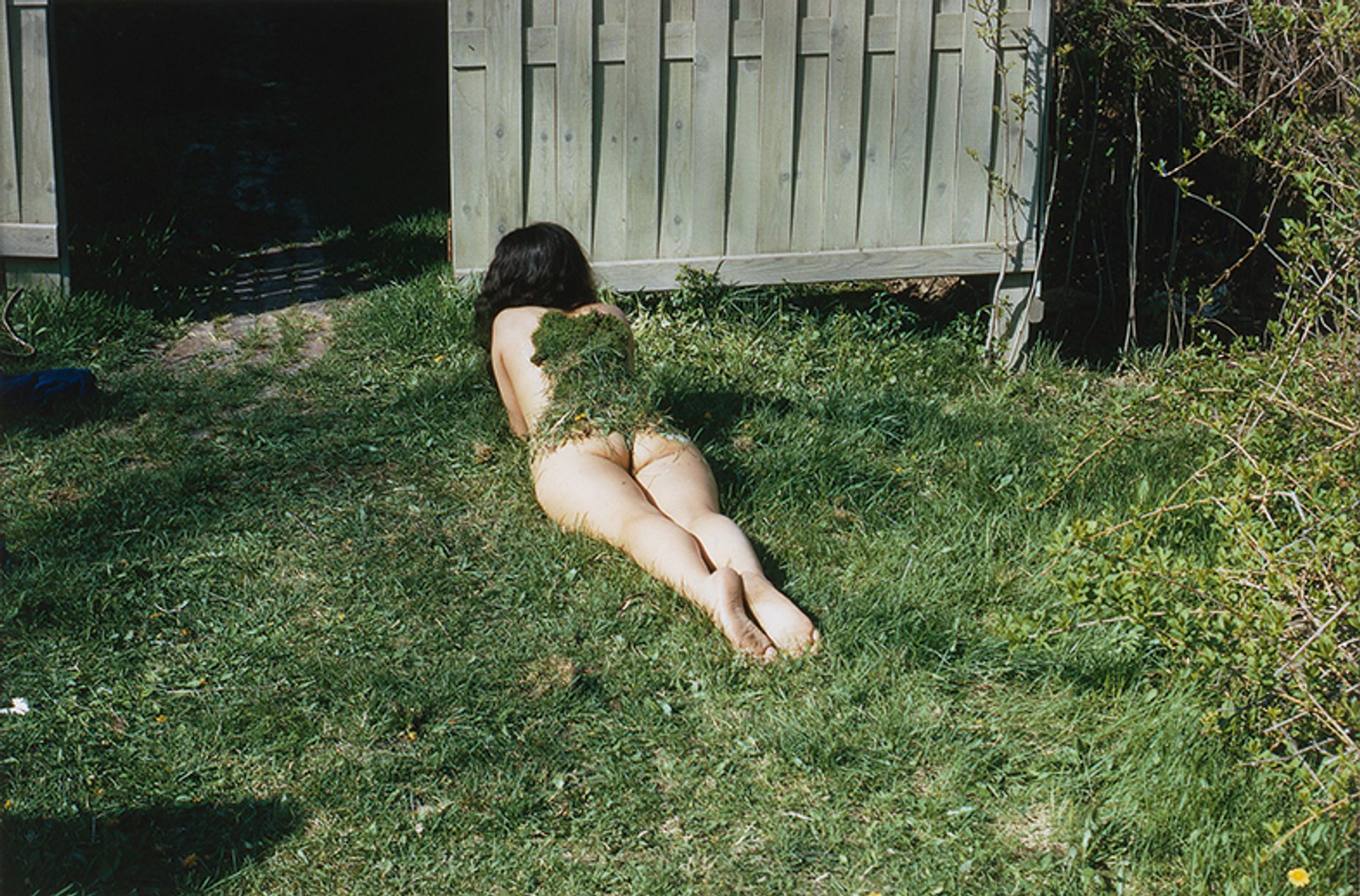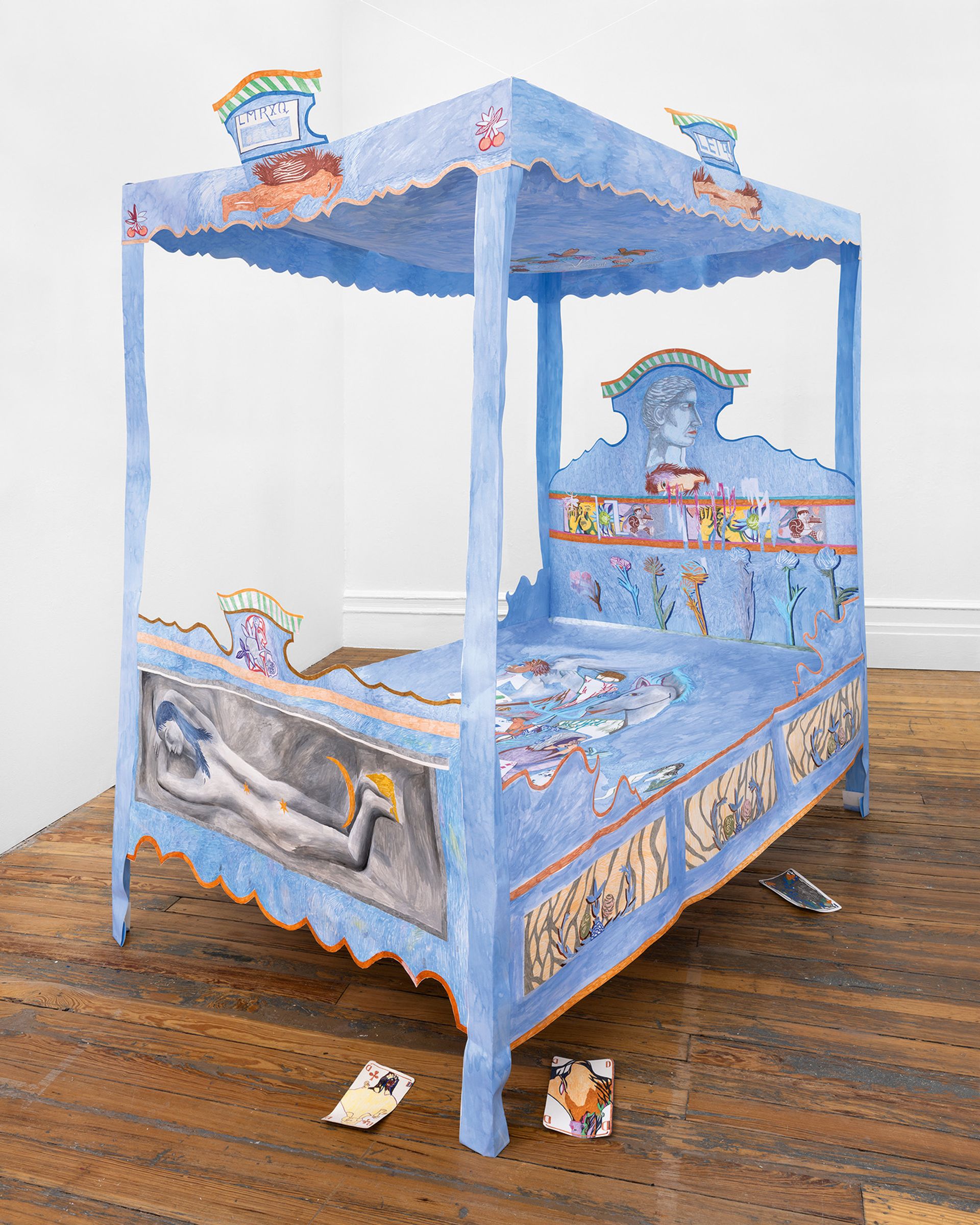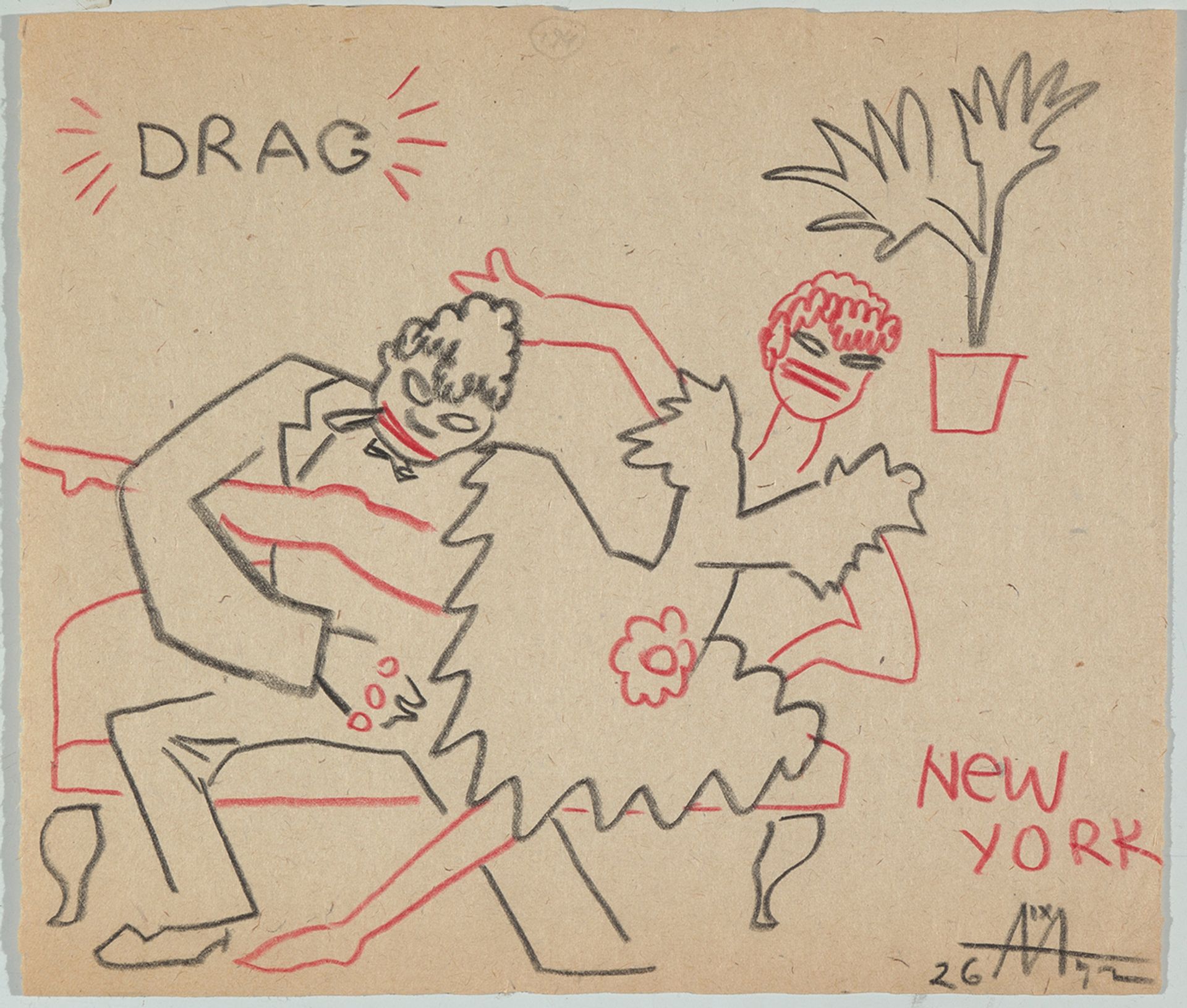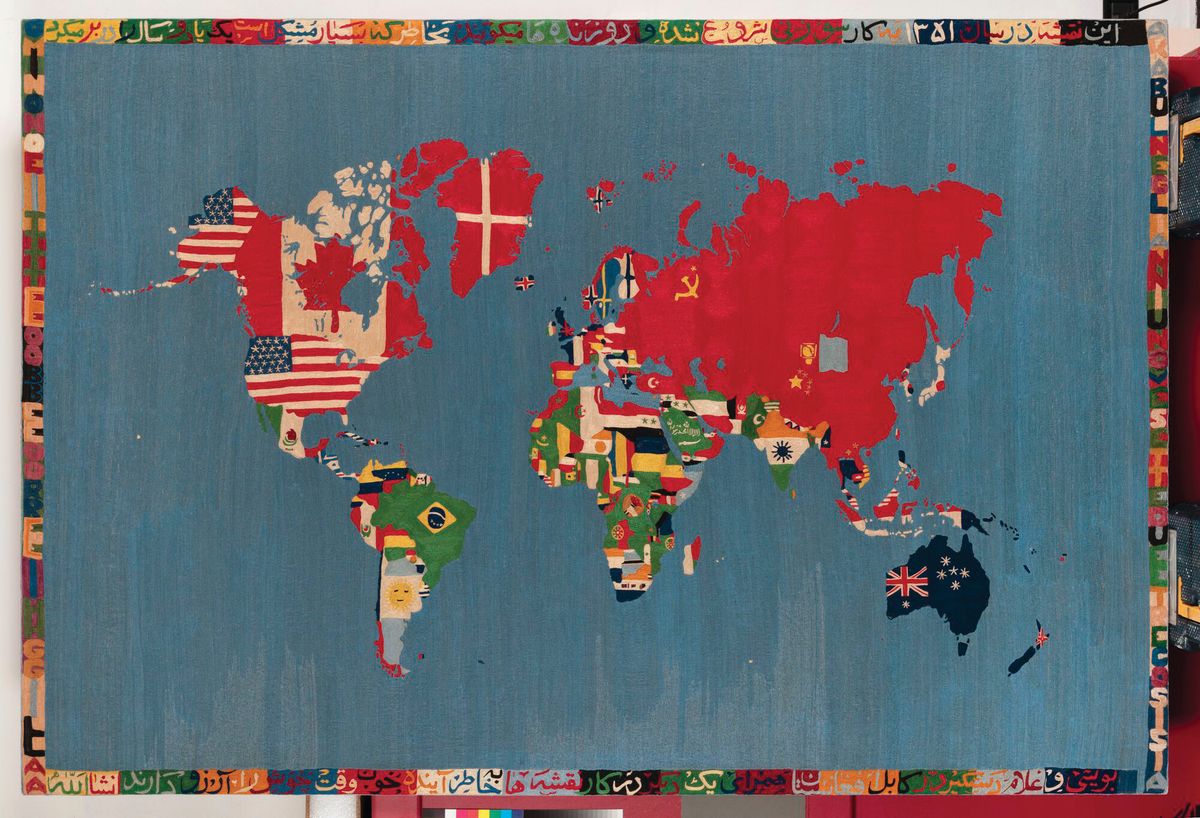Alighiero Boetti, Mappa (1983-84)
Around €3m, Tornabuoni Art
Alighiero Boetti began his celebrated Mappa series of tapestries (above) in 1971 and continued making the works until his death in 1994, revealing how the geopolitical landscape changed over those two decades. This map work, for example, shows the sprawling Soviet Union around five years before the fall of the Berlin Wall. Along the map's edges is a black and white border of embroidered words that make up some of Boetti’s most famous phrases, such as udire tra le parole (or “to hear between the words”). The composition is “particularly striking for its colouring—it features a darker blue-green ocean upon which the brilliantly coloured continents seem to float”, reads a statement from Tornabuoni Art.
Francesca Piccolboni, the director of the gallery's Paris location, highlights the cross-cultural process of creating the work. “The Mappa series combines the conceptual vision of a Western artist with the skilled craftsmanship of Afghan women embroiderers,” he says. “Boetti had a deep affection for Afghanistan and felt the nation’s struggles and losses as if they were his own. Even during times of conflict, he sought out Afghan refugees in neighbouring Pakistan to continue creating these remarkable embroideries.” Piccolboni adds that this example from the series is “likely the most iconic of Boetti's career”.

Ana Mendieta, Untitled (Grass on Woman) (1972) © The Estate of Ana Mendieta Collection, LLC. Licensed by Artists Rights Society, New York. Courtesy Galerie Lelong & Co and Prats Nogueras Blanchard Barcelona/Madrid
Ana Mendieta, Untitled (Grass on Woman) (1972)
$75,000-$100,000, Prats Nogueras Blanchard
There is no end to the intrigue surrounding the life and work of the groundbreaking Cuban American artist Ana Mendieta. Her untimely death at the age of 36 often receives outsize public attention. However, Mendieta’s work in performance, sculpture and Land art is now considered pivotal to the contemporary canon, and she was recently included in the exhibition Actions for the Earth: Art, Care & Ecology at the Block Museum of Art in Evanston, Illinois, about artistic practices that foster a deeper consciousness of humans’ interconnectedness with the planet.
In 1972, Mendieta created Untitled (Grass on Woman) in Iowa and documented the work on 35mm colour slides. It was later identified by art historians as her first “earth-body” piece, a term the artist used to describe the dialogue she created between nature and the female form. Mendieta went on to develop this aesthetic in her later work, particularly her highly regarded Silueta series (1973-80), in which she carved, dug, burned or otherwise integrated her silhouette into various landscapes, simultaneously creating a self-portrait and a stand-in for other female bodies.

Agnes Scherer, Trousseau dérangé (2022) Courtesy the artist and Sans Titre, Paris
Agnes Scherer, Trousseau dérangé (2022)
€20,000-€30,000, Sans Titre
Sans Titre gallery is offering a peaceful refuge in the middle of its Art Basel Paris stand: a life-sized, four-poster double bed. But try resting on it at your peril—it is made entirely of paper. Fixed to the walls and ceiling with transparent strings, the 2m-tall sculpture is imposing but delicate. The artist, Agnes Scherer, has adorned the work (which was inspired by her own antique bed) with images and patterns
using felt tip markers, liquid ink, gouache and
coloured pencils.
The piece’s centrality to the stand is inspired by “the artist’s interior life, where the bed occupies a preponderant role”, says Marie Madec, the founder and director of Sans Titre gallery. “The representation of bodies lying down is at the centre of the work of Scherer, who is fascinated by the direct link between sleep and death, two temporalities that imply a loss of consciousness.” Another version of the work has already been bought by a US collector.

Juliette Roche, Rue Victor Massé (1912) Courtesy Galerie Pauline Pavec
Juliette Roche, Rue Victor Massé (1912)
€80,000-€100,000, Galerie Pauline Pavec
This oil painting on canvas by the French Modern artist Juliette Roche depicts two women in a costume store dressed in masculine clothing. It was painted in 1912, when women in France still needed legal permission to wear trousers. (This law was actually only abolished in 2013, although it went unenforced for decades before.) The work’s documentation of “cross-dressing” was therefore quite provocative for the time. “Far from being a voyeur, Juliette Roche herself is no stranger to the strangeness of her characters, which today we would call queer,” wrote the sociologist Éric Fassin and the art and literature scholar Joana Masó in a new essay published to coincide with Art Basel Paris. They added: “In this store, the reference to homosexuality is underlined by the presence of masks, to which the artist dedicated several works.”
Galerie Pauline Pavec, which acquired all the works in Roche’s studio from the Albert Gleizes Foundation in 2023, “specialises in rediscoveries of historic artists, especially women artists”, says its founder, Pauline Pavec. The dealership is showing a selection of Roche’s works at Art Basel Paris, all of which come from the estate—except for Rue Victor Massé, which was bought at auction.

Sergei Eisenstein, Sex drawings (1930s-40s) Courtesy Ellen de Bruijne Projects and Stephenson Art, London
Sergei Eisenstein, Sex drawings (1930s-40s)
€7,000-€20,000 EACH, Ellen de Bruijne Projects
Sergei Eisenstein, who was born in 1898 in Riga (then part of the Russian Empire), is best known as a pioneering film director. But he was also an avid draughtsman from an early age, and he often sketched as part of his cinematic and theoretical process. It was during his time in Mexico for a film project in 1931-32 that he created his most significant body of drawings, including the “sex drawings”—a name coined by the historian Joan Neuberger—which depict a variety of erotic scenes, both straight and queer. The works have long been kept hidden owing to censorship.
“When I first saw the drawings, I was moved by their quality, beauty and candour, and overwhelmed by their clarity and freshness,” says Ellen de Bruijne, the founder of Ellen de Bruijne Projects in Amsterdam. She adds that the sketches open “a whole new queer perspective on the entire work of Eisenstein”. Although the drawing collection is rarely exhibited to a wider audience, its representative, the art consultant Matthew Stephenson, has shown the works in collaboration with museums and galleries in New York, Mexico City and recently, via Ellen de Bruijne Projects, in Amsterdam. These are all cities in which Eisenstein lectured and, in the case of Mexico City, filmed during the period he made this group of drawings.


